The United Island Hopper route is a bucket list item for many avgeeks. With views of numerous idyllic atolls spread across the Pacific and multiple takeoffs and landings to enjoy, it is one of the most unique flight experiences you can possibly find.The route has been on my radar for years, although I’d not actively looked into planning a trip.
Until now. When I realized that the United Island Hopper was an excellent candidate for using the United Excursionist Perk, I figured I’d look into planning a trip around enjoying both the flight experience and enjoying the islands along the way.
What Is The United Island Hopper?
The United Island Hopper route runs between Honolulu, Hawaii and Guam, stopping at up to five islands along the way. The service typically runs 3-4 times per week, and not all islands are served each time. If you catch the route that includes all the stops, you’ll visit:
- Honolulu (HNL – origin)
- Majuro, Marshall Islands (MAJ)
- Kwajalein, Marshall Islands (KWA)
- Kosrae, Micronesia (KSA)
- Pohnpei, Micronesia (PNI)
- Chuuk, Micronesia (TKK)
- Guam (GUM – destination)
The route totals approximately 4,365 miles, with the Honolulu-Majuro flight being by far the longest segment of the bunch. The rest of the flights are all less than 700 miles. We can use this to our advantage later when it comes to planning award flights.
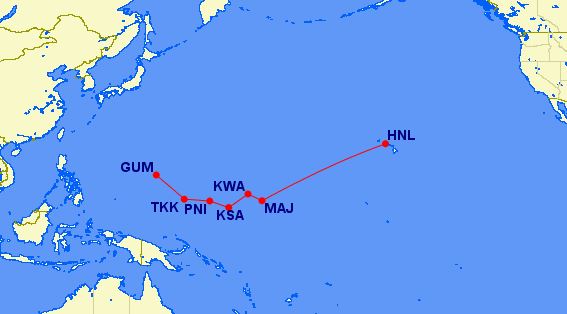
Typically, there are two Island Hopper flights per week that serve all five islands. Sometimes Kosrae and/or Kwajalein are skipped. The “full” flights with all island stops depart on Mondays and Fridays. If you search awards on these days, you’ll be able to pull up the 5-stop schedule.
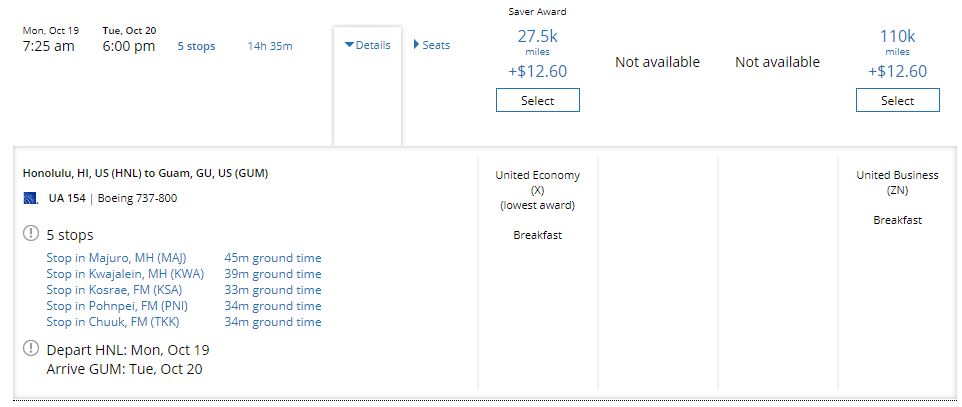
As you can see, the ground time is pretty short at each stop. You can deplane at each, though, with the exception of Kwajalein. The island is a U.S. military base. The rest of the islands are open to tourists.
The United Island Hopper runs the opposite direction from Guam to Honolulu. However, you’ll likely want to fly westbound. The eastbound option gets you into Honolulu at 2:50 AM and that last leg from Majuro is at night. You’ll likely be arriving into Majuro in the dark as well. The schedule has you arriving after sunset, and the light fades quickly in the tropics.
Do Most Avgeeks Fly Straight Through?
From the accounts that I’ve read, it seems like most folks who are interested in flying the island hopper do so as a single day excursion. They are there for the novelty of the flight experience. The experience is enjoyed through a camera lens from a window seat. Although you are able to deplane at each stop (with the exception of Kwajalein), the taste of the islands will be brief.
This is perfectly fine, and it has been the way I have expected to fly United Island Hopper for a long time. It would be easy to take ~3 days total for the experience, with a night in Honolulu and a night in Guam on either end of the experience. I live on the West Coast, so getting to Hawaii is easy. Getting from Guam to San Francisco is easy enough as well, as there are one-stop itineraries through either Tokyo or Honolulu.
However, the more that I looked at some of the islands, especially those in Micronesia, the more I have been interested in planning an Island Hopped trip with stops. But this presents its own set of challenges.
The Logistics Of Planning Island Hopper Stops
There are a few things to consider when planning a United Island Hopper trip where you stop along the way:
- The United Island Hopper doesn’t run everyday
- Not every island is served each run
- Some islands may be better choices than others with limited time available
Because the United Island Hopper doesn’t run every day to every island, you need to plan carefully when adding in stops. The easiest islands to plan to visit are Majuro, Pohnpei, and Chuuk. These are served every United Island Hopper flight. You can easily plan a 2-night stay at any of them.
The most difficult island to plan to visit is Kosrae, since service is the most limited. If you stop on Kosrae on a Monday, for example, the next flight out isn’t until Friday. You’re stuck for a minimum of four days. The Friday to Monday stay is three nights. Take your pick between them.
Actually, I lied about Kosrae. The most difficult island to visit is Kwajalein, as you cannot stop on that one at all. Visits must be sponsored by a member of the U.S. military, and that isn’t going to be easy to come by for the average Joe.
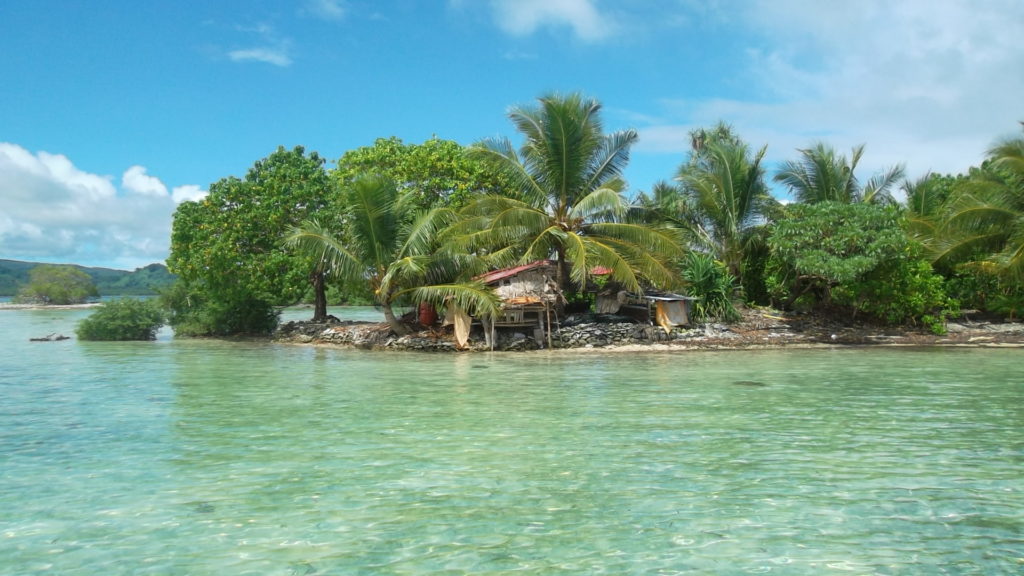
Which Islands Are Worth Visiting?
This is the real question. I’ve not visited either the Marshall Islands nor Micronesia, and neither get a whole lot of tourism. The Marshall Islands see around 5,000 tourists per year, making it one of the world’s least visited countries. Micronesia sees more, but given how hard it is to get to the islands, numbers are still low. Micronesia had 12,625 tourist arrivals in 2016. In either case, you’ll be in rare company if you decide to visit any of the islands.
Based on my limited research, the best choice appears to be Pohnpei in Micronesia. Pohnpei is the largest and tallest island in the Federated States of Micronesia and also has the largest population. The islands receives a ton of rainfall every year and has numerous beautiful waterfalls, along with diving and excursion opportunities.
Both Kosrae and the Chuuk Islands look like great stops as well. The Chuuk atoll is approximately 20 miles across and it is dotted with several large islands and numerous tiny ones. Kosrae is the least populated of the four states, and it has some excellent snorkeling opportunities.
Ideally, I’d also like to stop over in Majuro, just to have one night in the Marshall Islands. Visiting all four destinations in a reasonable amount of time will be difficult. I’d hope to keep the trip to just over a week. Let’s see what sort of United Island Hopper itinerary we can plan with a few stops within that timeframe.
Planning United Award Flights
You’ll want to use your miles for trips on the United Island Hopper, as cash tickets are very expensive. A one-way from Honolulu to Guam booked a couple months out that visits all five islands will cost you a whopping $1,500. Miles are the way to go. You can of course use other Star Alliance miles, but you’ll see that there are other reasons to stick with United’s own miles.
For one, the United Excursionist Perk is going to be invaluable when planning a United Island Hopper itinerary with stops. If you fly from either Hawaii or all the way from the mainland U.S. as your first award segment, your next one-way award within the islands will be free. This will get you to two islands for a reasonable price.
Let’s assume you want to start from the mainland United States. If you want to visit Hawaii on the front end, use whatever miles you’d like to get there (I’d suggest not using United miles for this). Just remember that Honolulu is your jumping off point for your United Island Hopper ticket. I’d prefer to combine everything into one award. The difference in award price is minimal. A Saver economy award from Honolulu to Majuro is 27,500 United miles, versus the 35,000 miles required to fly all the way from the mainland to Majuro. I’m going to make my first award Arcata (ACV, my local airport) to Majuro (MAJ).
Given that I want to spend only a day in the Marshall Islands, I’ll plan to make the Sunday morning United Island Hopper departure from Honolulu. Sunday and Monday are the only days where United runs back-to-back flights.
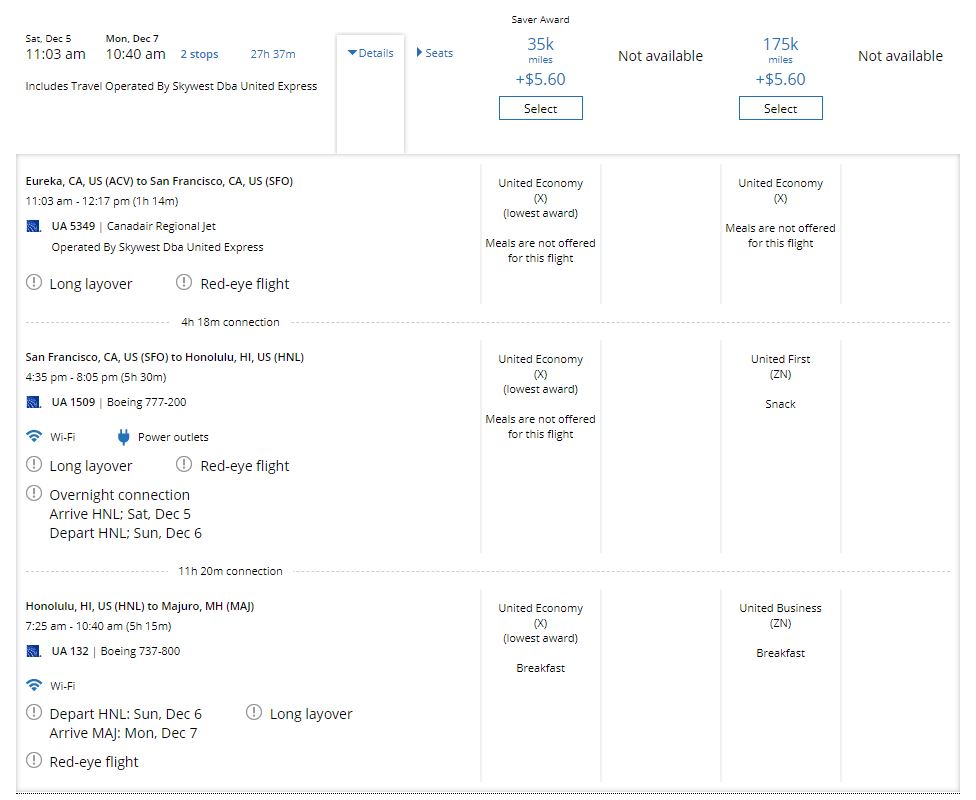
Constructing this as a multi-city itinerary with an Excursionist Perk, the next segment will be free. The Monday United Island Hopper departure makes all stops, so we have our choice of islands. I’m going to elect to skip Kosrae in favor of Pohnpei, given that I’d be stuck on Kosrae for four days. Sure enough, I’m charged 0 miles for my Excursionist Perk. This will be a fun section of the Island Hopper, as I’ll fly three of the segments consecutively.
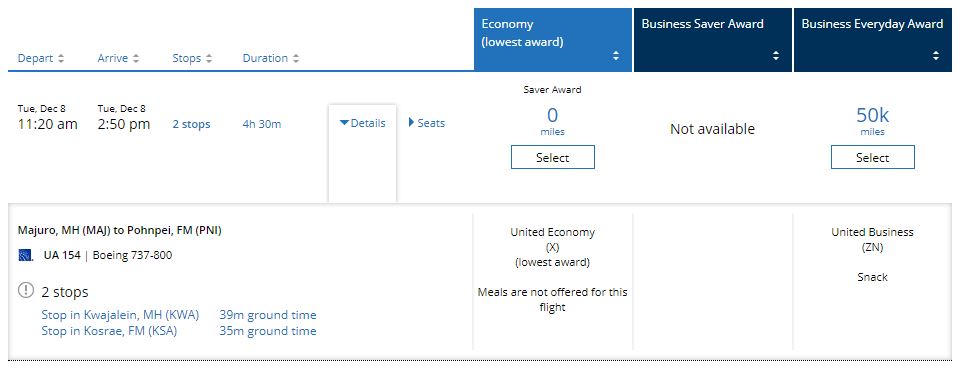
Pohnpei will be the first real rest of the trip. the next two days will be spent here, enjoying what the islands have to offer. The next United Island Hopper will come along on Thursday (the Wednesday departure from Honolulu).
Putting The Short-Haul Sweet Spot to Use
Since I’m already out this far, I can’t pass up a stop in Chuuk as well. And it will hardly cost anything. United charges just 8,000 miles for nonstop one-way awards in regions outside the U.S. While I typically find this pricing on short-haul partner flights, I forgot it would apply to these segments as well. If you want to pay cash, United is currently asking $238 to fly you the 438 miles. I’d rather burn 8k miles. There aren’t even any taxes or fees.

The next island hopper will be another two days, so that’ll provide plenty of time to explore Chuuk. Now, I could plan the return home on Saturday, arriving back in California on Sunday, local time. The flight timing requires an overnight in Guam, though. I figure I might as well make it two nights and enjoy a full day there. The nonstop segment to Guam from Chuuk is only 8k miles as well, so let’s roll with that plan. I’ll arrive home Monday.
From Guam I can book an economy award all the way back to Arcata for 35,000 United miles one-way. This will take me via Tokyo or Honolulu. I prefer the trip via Tokyo as the layovers are shorter and the departure from Guam is around noon.
The total damage for our little trek? Just 86,000 United miles and $49.85. This might seem like a lot of miles for an economy trip, but it’s really not, considering all that you get to do and see.
Where To Sit On The Plane?
At the window, for starters. If you want to fly the United Island Hopper and sit in an aisle seat, then I really don’t even understand why you’d want to fly it!
Beyond that, you’ll need to do a bit of research to figure out where to sit to enjoy the best views. This reddit thread has some great advice on flying the island hopper, including where to sit on the plane. The prevailing seating advice when flying westbound is:
- Majuro – left side (seat A)
- Kwajalein – left side (seat A)
- Kosrae – right side (seat F)
- Pohnpei – right side (seat F)
- Chuuk – right side (seat F)
You’ll also want to avoid row 11 on the plane, as it is missing a window. Beyond that, I’d be sure to either pick a seat in Economy Plus (rows 7 and 8 are the most ideal), or at the far back of the plane so you’re not right over the wing. Of course, getting upgraded to first class would be amazing. This is entirely possible if you have United status. You can pick different seat assignments per segment of the United Island Hopper.
Final Thoughts On The United Island Hopper
Although I mock-planned this trip for early December 2020, I did not book it. Award space on the United Island Hopper tends to be decent 3-4 months out, so I’m not worried about finding it when I do want to travel. The United Excursionist Perk and short-haul awards really provide excellent value for a trip with several stops. Even if you didn’t add those extra stops in, you could visit any two islands along the way for 70,000 miles round-trip in economy. This is more than I like to pay, but the value for what you get cannot be understated.
I’m hoping to plan this trip with the older of my two boys for sometime in 2021. He is very much into airplanes and aviation, and it’d be an amazing experience to fly together. We’ll see if I can make it happen. Currently, I’m only 32,000 United miles short of what we need!




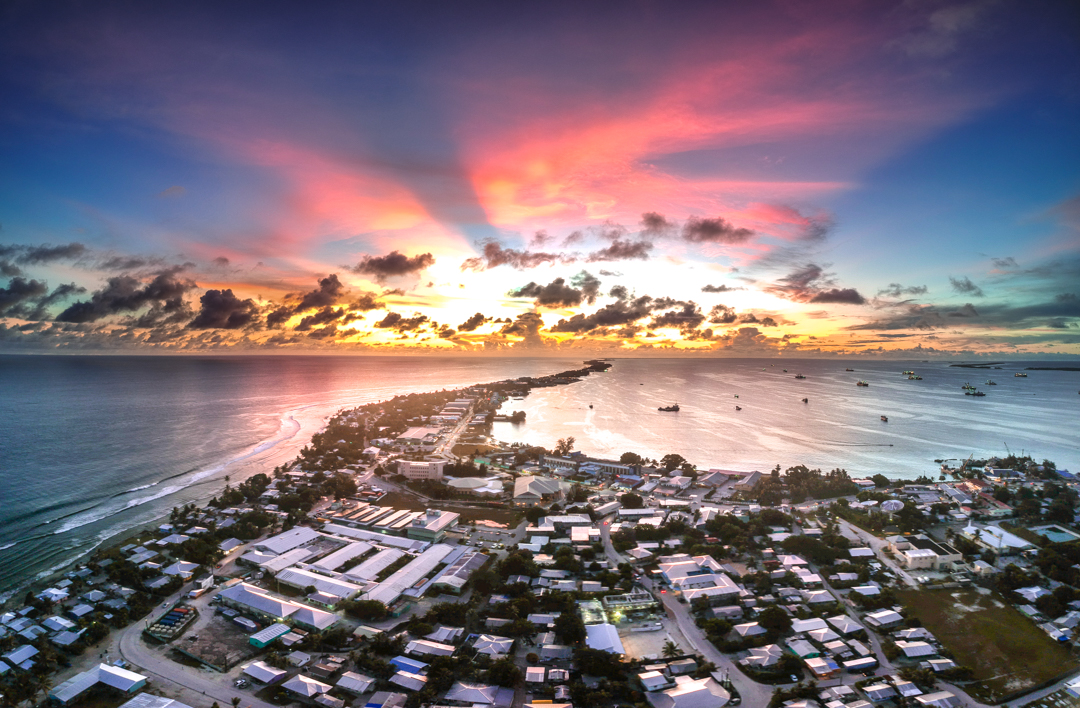
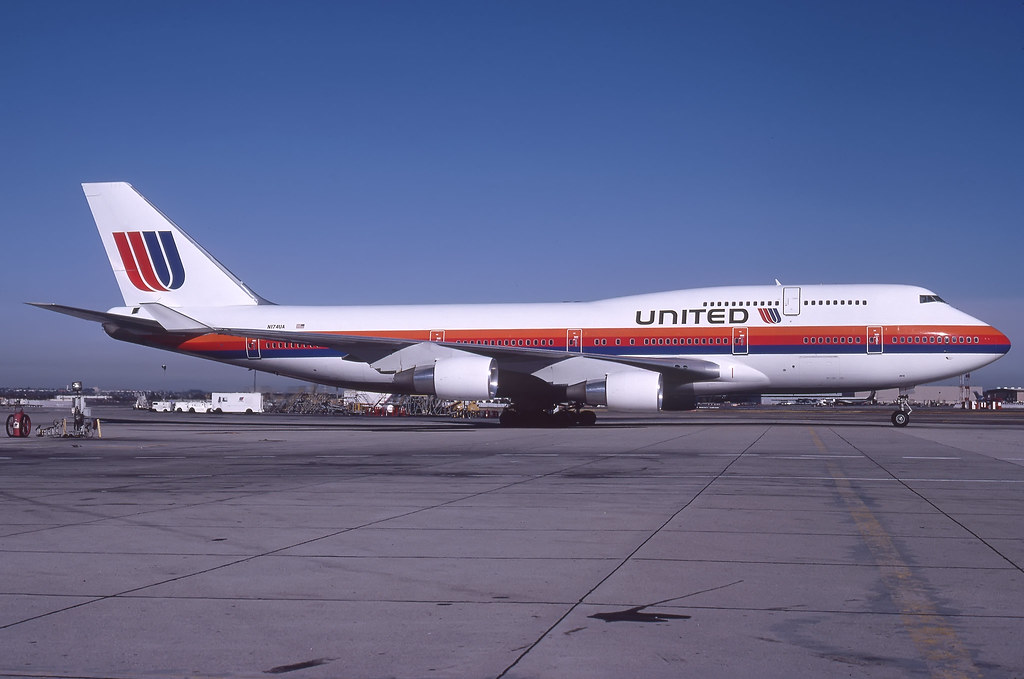
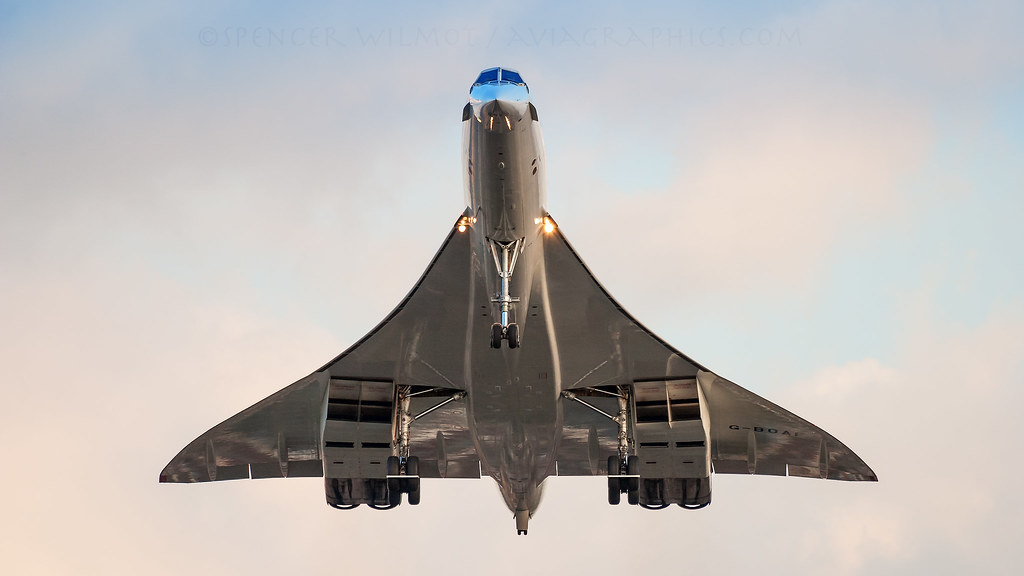

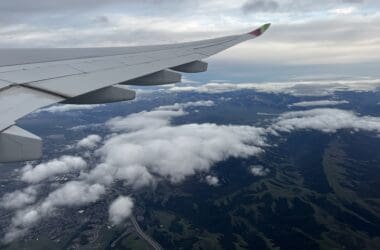

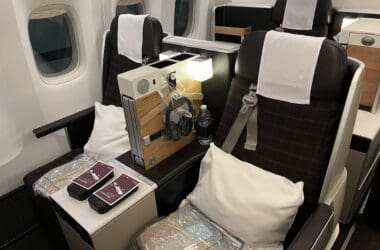

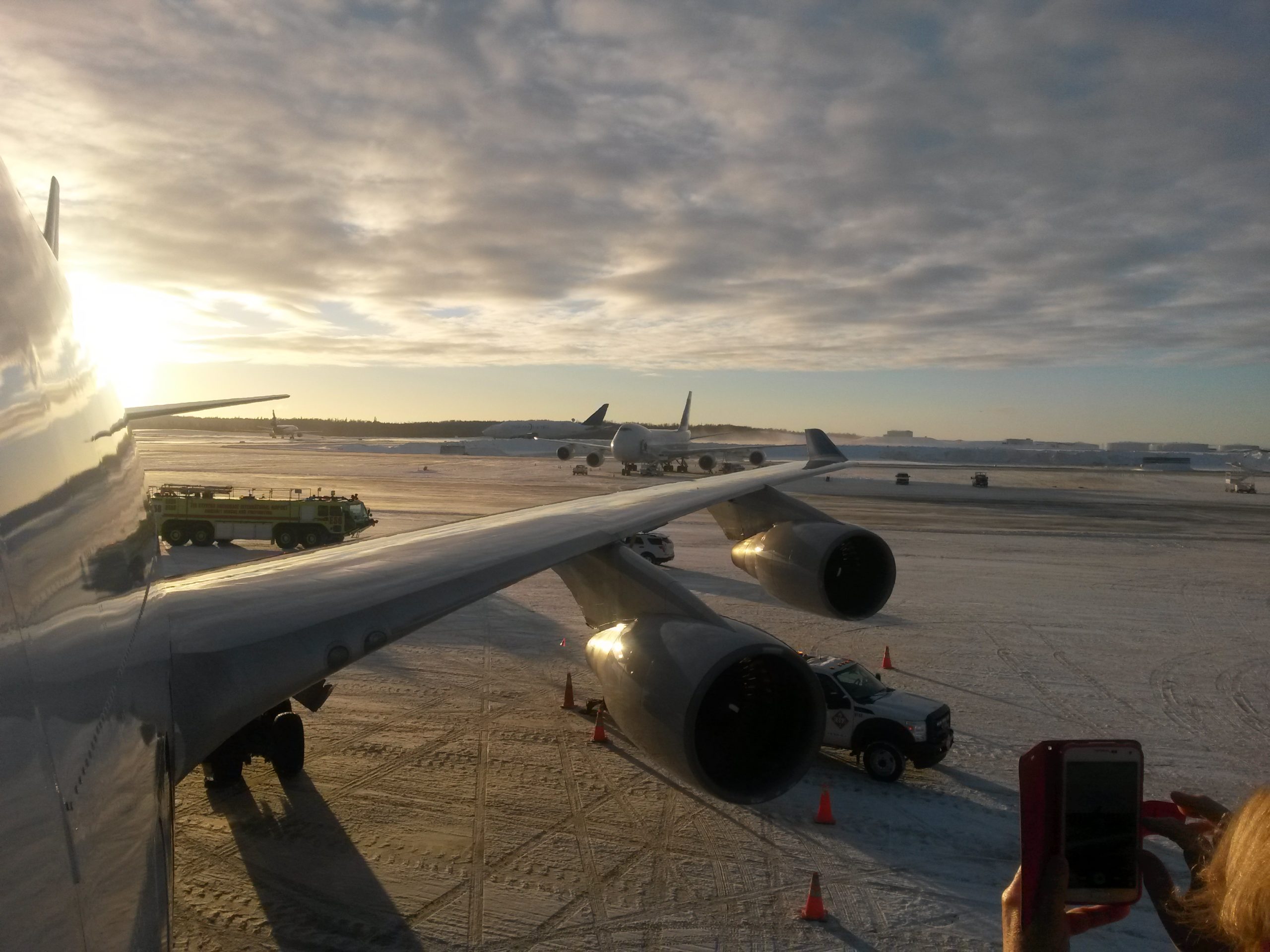
Hmmm? It looks like United may have given ME this “gift” in the not too distant past??? Long story short, I reside in the Philippines, but need to get back to the US west coast often. And, I’ve quit using freq. flyer miles on United because not only did their service go downhill so fast, but once they took over the island hoppers, ( which was never United’s in the first place, it was Continental’s, with Untied only taking over after the “merger” ).
Once THAT occurred, whenever i wanted to go back to LAX< SEA. or SFO using my Untied miles, they would only allow the choice of flying to the west coast THS way, and would say nothing was available direct or with just one stop!?! This was really inconvenient, for a plethora of reasons. First, the flight from the Phils. was so sort there ws no seat back entertainment on the plane, and also so short going to Guam, no meals ere serve, only drinks. Then after doing customs and immigration at Guam, we had to do that all love again at every stop if getting off, including Hawaii! ( Not only that but since the planes used on these short routes were i the air for such short time, NO SEATBACK MOVIE ENTERTAINMENT )! And, to top THAT off no meals all the way to Hawaii, and no drinks or snacks either, because it was all domestic itineraries, of comparatively short duration. ( Despite the fact they made you go down and go thru the dog and pay show of customs/immigration at each and every stop. I finally gave up on United with all this BS, and no longer fly them if I can avoid it. It just was not a very relaxing or handy way to get from the Philippines to the US, what with all the stops and time consuming lining up everywhere. I don't know how it is now, but that was the way it was for me, the first couple years after the Continental merger int United, IF I wanted to cash in United miles, and I haven't used them since.
That flight experience is unfortunately what they offer on their Oceania routes, even though most are international. It’s all 737s without entertainment, and you do need to bring your own food.
Major bummer you couldn’t get on the nonstop to Hawaii, though, as you *weren’t* looking to see all the islands.
This is a great post, I really want to do this myself. Of course, with no United miles, I saw the price tag and put it in the “sometime down the track” basket, because also getting to Hawaii from Ireland is no mean feat 🙂
Haha, so true! It’s difficult enough to get to Hawaii from the East Coast, or so I’m told. Puts it in perspective when you realize that Athens is just as far from NYC as Honolulu!!
I have to imagine United miles are hard to come by for those in Europe? You can certainly use other currencies, but United’s is by far the best. Cash prices, especially if you plan in stops, are just obscene.
Can’t wait for when I can actually make this happen. Hope you can, too, at some point. Thanks for the comment, Trent!
We took the westbound route with all the stops at the end of January 2020. It turned out to be our last international trip for a while and we are sure glad we did it. Some of the stops were beginning to ban foreign visitors due to covide-19 . . . while we were on our trip. Even in our hotel in Guam the guests were beginning to get paranoid of other visitors. We stayed at the Outrigger and would gladly do so again. Just join their loyalty club after booking and you will get all sorts of benes. The food and drink prices are a bargain and there is an ABC store next door for most of your incidentals, snacks, and drinks.
Anyway, it was a fantastic trip on our bucket list and we are so glad we made it. If one or two of you are traveling, book the economy bulkhead on the left side. behind first class The person next to the window will get some amazing photos of some of the most remote, beautiful places on earth. It’s 3×3 seating and the aisle is reserved for the take-along mechanic—a really friendly, interesting guy. He has to do the ground safety inspection at each stop and be able to make any necessary repairs. The locals are simply not equipped for the job so he is the ground crew. Everyone has to deplane with their carry on and personal items at each stop, except for the army base where nobody gets on or off except for military personnel. At other stops, locals get on an off. Some of the stops will be so short that there is no way to get a passport stamp because you have to exit and clear security again to get back on the plane. But if you are very nice to the local airport staff, they may be willing to take your passports, get them stamped, and return them to you. Many of the flight crew will be happy to snap your photo at the stops if you ask nicely and they have finished their checklists. Please don’t interrupt them if they are working while on the ground.
Don’t just do a turnaround in Guam. Stay a few days and enjoy this beautiful island. Their cultural museum, located just across from the cathedral, is one of the best designed, and interesting collections we have ever enjoyed in the whole world. The artwork in their gift shop is quite the bargain and worth shipping home. Definitely rent a car and drive around the island.
Thanks so much for the tips and detailed account of your experience! Sitting near the mechanic sounds like a must, at least for some of the segments. I’m definitely going to wait until COVID-19 has passed enough that the islands are comfortable having visitors again, as I would like to stop in the middle in both the Marshalls and Micronesia.